This article will deliberate advanced implant dentistry using the 3-D difference to diagnose and treatment plan the failing maxillary arch in the third dimension. What I know now can be directly attributed to GALILEOS Cone Beam and can be applied to any advanced dental case. Treatment planning the decimated and devastated dentition necessitates the prerequisite for enhanced 3-D imaging. Of the cases presented here, all come diagnostically driven with the 3-D imaging of GALILEOS, ensuring optimal treatment outcomes. I practice life changing dentistry and have been doing so for over eight years with GALILEOS.
The technology I have invested in has facilitated these treatments, as well as afforded patients the assurance of my judgement as they see first-hand the benefit of having these technologies. In short, the outcome is unmatched and how they advance my treatment planning and treatment skills in all cases. We can reveal, identify and present more care with this radiographic modality. We do dentistry differently and utilise advanced treatment modalities to increase the longevity of treatment rendered. Using careful 3-D analysis and guided implantology where possible, we can safely and precisely place restoratively driven implants. We will use cone beam computed tomography (CBCT) imaging to confirm or alter our diagnosis when conventional 2-D imaging is limited in its diagnostic value.
I perform complete site assessment, tooth by tooth, and rapidly transfer the information to the patient chairside. 3-D imaging improves and elevates our diagnostic ability and can facilitate the removal of diseased tissue—i.e. hopeless carious or periodontally involved teeth—and expose unseen periapical or inter-radicular pathology.
embedImagecenter("Imagecenter_1_2464",2464, "large");
We dentists strive to improve patients’ lives, but sometimes we are faced with hopeless dentitions requiring enhanced diagnostics and many dental disciplines to treat globally. Psychological complexities with medical and financial capabilities are factors that must be addressed prior to commencing with any necessary treatment. Due to these and other factors it may be advantageous to stage our complex treatment in order to advance patient care to completion. With GALILEOS, we can see the whole picture and our patients can visualize their actual maxillofacial anatomy during a computerized virtual tour. Sirona Dental Technologies has married innovative technologies to improve diagnosis, planning and treatment through a digital workflow with sophisticated but easy to use and implement software.
Guided surgery facilitates the safe precise placement of dental implants while minimizing the untoward sequelae associated with inflammatory changes that occur after extensive conventional implant surgery. Planning the placement of virtual implants to avoid vital anatomical structures, i.e. adjacent teeth, nerves, sinuses et al. is effortless with GALILEOS implant planning software.
Life changing dentistry is only possible when patient and dentist are in full agreement as to what are the optimal possibilities for each case. The initial conversation must address the patients’ physical and emotional desires and, of course, their budget. Long-term effects of neglect and patient anxiety caused by past dental experiences are impediments to case acceptance. 3-D virtual analysis is imperative to educate and communicate extensive problems associated with advanced dental destruction. The ultimate in-office radiographic imaging is GALILEOS and is the most used CBCT unit in the world (Gordon Christensen of CRA).
3-D diagnostics
High-definition imaging assists the clinician in making accurate decisions for all types of dental procedures, including implant surgery, full mouth reconstruction, extractions and bone grafting. My indication for obtaining a CBCT scan in order of use is:
- Implant planning
- Comprehensive treatment planning for tooth assessment, i.e. rampant decay, periodontal breakdown, and clinical challenges
- Bone evaluation and extraction site management
- Revealing vital anatomical structures and their location, nerves, arteries, sinuses, lingual concavities, and tooth proximity when planning implant placement
- Surgical guide fabrication and integration with CAD/CAM data
- Pathology
- Oral surgery, third molar evaluation
- Complex periodontal and endodontic evaluation.
Digital tools facilitate the education and communication with our patients and virtual images represent our patients’ maxillofacial anatomy in a 1:1 undistorted manner. Prior to my utilization of 3-D imaging it was challenging, to say the least, when communicating the extent of my patients’ conditions and the comprehensive nature as to what is necessary to return them to a full complement of teeth and oral health. Patients unaware of the destruction caused by bacterial infection, poor dentistry and neglect are very difficult to convince that they require extensive dental treatment to improve their oral health. Since I have the benefit of 3-D imaging, their conditions can be displayed on a large computer screen, which facilitates an interactive conversation which generally results in their understanding their problems and moving forward with the necessary treatment presented. It is especially useful when evaluating bone deficiencies, periapical pathology, evaluating existing periodontal support and residual bone volume in edentulous areas.
All of the following cases benefited via advanced 3-D imaging to gain a complete understanding of the enormity of the obstacles these patients faced prior to commencing with treatment. The case presentation visit explained clearly how advanced implant dentistry and proper sequencing would provide each patient with their desired result. The goal for each was to rehabilitate these patients with an aesthetic and fully functioning maxillary arch of new teeth. They all were given options to replace hopeless maxillary arches with the guarantee being that their prosthetic replacements would look and function much better than their failing natural dentition.
What follows is how I diagnosed, treatment planned, case presented and treated three decimated maxillary arches. As you read my applications of the 3-D difference and the eventual treatments, think about how these cases were positively impacted by the use of 3-D imaging and how its use led to case acceptance and facilitated positive patient experiences, even though these cases were as complex and challenging as exist in the dentistry today.
Where do we begin?
All three patients presented with a common problem, hopeless maxillary dentitions due to years of neglect, fear and poor maintenance of their natural dentitions. These types of situations are complex and challenging to treat. Each case required the removal of all maxillary natural teeth, but psychological complexities made for the unique treatment plans developed. It took a lot of courage for these patients to finally decide that they were ready to proceed with a treatment to improve their conditions. The decimated dentition requires managing the whole patient and the 3-D difference increases the ability for my patients to understand and accept treatment. My office has a distinct advantage over offices lacking the technology.
The first patient accepted her fate of an immediate complete upper denture, prior to guided implant placement and replacing her teeth with an implant retained metal reinforced horseshoe CUD overdenture. The second patient was not ready to accept the immediate complete upper denture so she would be transitioned into a four unit implant retained re-movable over-denture. I elected to retain a number of natural teeth while bone regenerated and implants were placed as bone volume allowed. The natural teeth would retain a fixed provisional as long as possible. The third case would be treated with ‘teeth in a day’ approach. All maxillary teeth would be extracted and six immediate implants would be placed and restored with a fixed screw-retained prosthesis during the same visit. These three case reports will illustrate what is possible when advanced technologies are implemented in the modern dental practice. The 3-D difference was employed to assess each case on a tooth-bytooth basis. The diagnosis that each tooth had a poor to hopeless prognosis made it clear that ‘HERODONTICS’ would be uncalled for.
Case 1: ‘I want to smile again’
Christina, 37, who was seeking to improve her smile and improve her confidence. She had been treated previously at another dental office with little success and it was obvious that critical care was necessary to improve the current state of her maxillary arch. The initial visit was to decide upon a course of action to remove her discomfort and provide a fully functioning arch of teeth. Christina presented with extensive decay in all of the remaining maxillary natural teeth (Figs.1a & b). All conventional diagnostic, clinical and radiographic procedures were completed and reviewed during the first fifteen minutes. I recommended and she accepted an enhanced 3-D CBCT scan which would be used to perform a complete dental examination (Figs. 2a–c). During co-diagnosis she made it clear that she would accept extraction of all the remaining maxillary teeth and replacement with an immediate CUD. This would serve as an interim prosthesis that would allow her to begin to feel better about her smile and give her confidence to socialise and eat without discomfort. Options for a more definitive treatment were formulated between us and facilitated by the virtual 3-D imaging and 3-D analysis and review of the maxillofacial anatomy that existed.
There is no such thing as a cookie-cutter approach to diagnosis and treatment planning in complex dentistry. The clinician must be a good listener, be respectful of the patients’ desires and be decisive in providing solutions to their problems. We have to manage the entire patient from start to finish and manage and exceed their expectations.
Her treatment began with extraction and bone grafting the UR/UL molars #15 and #2 (Figs. 3 & 4). She accepted an immediate CUD as an interim prosthesis. This would provide her with a beautiful natural smile as fast as possible and commit her to the development of a more definitive treatment plan. Extraction of all maxillary teeth would remove the cause of her embarrassment and give her the confidence to eat more comfortably and socialise more readily. I impressed the maxillary arch after a couple of weeks of healing so the posterior portion of the denture could seat on a firm base. Christina developed a trust in us and was grateful to smile again. With this came a decreased level of anxiety and she was given an emotional lift when she came to realise that we were, as promised, the office that could change her life, make her feel better and be healthier.
Her treatment involved careful removal of all remaining maxillary teeth, extensive site preservation and buccal augmentation (Figs. 5–11). These procedures were well tolerated. Adequate time passed and we discussed and she accepted the next phase of treatment, which was to evaluate the result of the bone grafting procedures. I made a duplicate denture in Bio-Acryl radiopaque acrylic and attached to a Sirona proprietary bite plate used as a scan appliance during the follow up CBCT. The biteplate has fiducial markers that allows the SiCAT lab in Germany to merge data sets from a 3-D scan and optical scan of the maxillary arch (Figs. 12a & b). The lab milled out a precise surgical guide which corresponded to the planned implant sites. We scanned her arch and then proceeded to evaluate her anatomy using 3-D skull rendering views, offering her the benefit of visualising the virtual placement of lifelike actual implants specific to her case (Figs. 13a & b). Based upon a budget given we initially planned for a four unit implant retained over-denture. After reviewing the substantial gain of bone volume after bone augmentation it became apparent that she would be a candidate for an all on six screw retained fixed prosthesis (Figs. 14a–c).
It was necessary to precisely plan the four anterior implants in such a way as to never preclude the possibility of a future upgrade to an all on four style case. The usefulness of 3-D imaging is unparalleled in the dental office. Her post-op CBCT gave us the opportunity to offer her a completely flapless guided implant surgery through a carefully designed implant plan (Fig. 15). 3-D imaging demonstrated adequate bone to receive four to six Nobel Active regular platform implants. She left the office with a fixed provisional prosthesis. Performing a flapless guided surgery minimized pain, swelling and improve function, aesthetics and the quality of her life in a single treatment visit. Looking at the possibilities available, overdenture versus all on six, increased her confidence in our ability to provide the most optimal treatment and prompted her thanks, ‘I want you to be my dentist forever’ (Fig. 16). And that is the 3-D difference.
Case 2: ‘I’m not ready for dentures’
Mary presented in June 2015 with pain in her UL/UR quadrants and a feeling of loosening teeth. During her initial visit, we performed all conventional diagnostic procedures, clinical examination, full mouth series of periapical X-rays, periodontal examination and photographs (Figs. 17a & b). She had avoided visiting the dentist for many years due to a bad experience with past periodontal treatment. Examination revealed maxillary incisors with class II mobility, pocketing 8 mm or more throughout her maxillary arch, spacing of her incisors, hyper-erupted molars nearly exfoliated and missing teeth #18, #19, #30, and #31. Generalized plaque, calculus and oedematous gingival tissue was evident. No medical contraindications for dental treatment existed but she was very anxious about undergoing any dental treatment.
We recommended and she agreed to an enhanced CBCT 3-D radiographic evaluation. Reviewing these images confirmed my belief that all maxillary teeth were designated with a poor to hopeless prognosis. The 3-D images of her dentition gave her a clear understanding of the problems she faced. We discussed what options were available to improve her condition (Figs. 18a–c). Gaining her trust made it possible for me to provide emergency care during this initial visit with extractions of teeth #2 and #15. This treatment resolved her pain and Mary was convinced that she could handle the treatment plan outlined during our Co-Diagnostic evaluation. The definitive treatment plan possibilities were constructed, defined and presented during her second visit. This patient was confident that we could improve the quality of her life with advanced dental techniques and technologies. Once again the benefit of my in-office CBCT was instrumental in gaining a clear understanding of this patients’ problems and she was encouraged to accept treatment.
The preparatory phase of treatment called for strategically removing certain teeth while retaining others to retain a fixed provisional prosthesis. Bone grafting and site preservation precipitated the second 3-D scan to plan for fabrication of her surgical guide. In this case, six months passed and the #5, and #12 sites were re-evaluated for healing. Adequate bone was present to receive dental implants and the groundwork was prepared to carefully extract #7, and #10 and immediately implant these sites if the buccal plate was not damaged during the extractions. Reiterated after reviewing this CBCT scan was the absolute necessity for the buccal plate to remain intact, otherwise bone grafting would be performed. This would set back the timing of this case by at least four months, but as long as the remaining natural teeth are maintained then this would not be a big issue.
Mary's surgical template was created as a SiCAT classic guide, utilising a proprietary biteplate that contained fiducials and was secured to the remaining natural dentition with a futar bite registration. The SiCAT lab merged the 3-D data and a scanned diagnostic cast to complete the fabrication of this four unit surgical guide. Safe guarding and pro-viding precise implant placement is a key to the success of any implant case and the guide ensures that criteria for me.
The next phase of treatment was scheduled for Jan. 5, 2016. I planned to retain five natural teeth to secure a fixed provisional for as long as it took for her implants to integrate. Her initial temporary bridges were removed and teeth #7 and #10 were carefully extracted, leaving the buccal plates intact. I placed new biotemp crowns on the remaining five teeth which would receive and stabilise her SiCAT surgical guide (Fig. 19). Four implants were then placed in the sites planned, #5, 7, 10 and 11. Voids were grafted around #7 and #10 and second staged, while #5 and #11 were single staged. A new provisional biotemp bridge was inserted and will remain in position until implants can be loaded and used to retain an overdenture (Figs. 20–23). I have seen this patient subsequently and she reported little to no postoperative discomfort and was quite satisfied with how well her treatments have progressed (Figs. 24–26).
Case 3: ‘Can you help me?’
We received a call from a young man, Alex, who found our office during a Google search. He presented for a consultation where we began to gently discuss options for the replacement of his failing dentition. It took a life-changing event in his personal life and a great amount of courage for him to seek treatment. His situation was exacerbated by years of neglect and lack of financing, which contributed to the complete destruction of his maxillary arch (Fig. 27).
Our initial visit was me interviewing Alex and broaching the possibilities for the replacement of his upper teeth with an aesthetic and functional prosthetic replacement. Alex, 37, in relatively good health, had undergone a series of knee surgeries, which precluded him from presenting for treatment earlier. He made it clear that his self-esteem was low and hindered him in social settings. Periapical X-rays and digital photographs were obtained and I recommended an enhanced 3-D analysis to gain a full understanding as to what would be necessary to return this patient to oral health. He scheduled a second visit to have a CBCT taken. Utilising the protocol I employ for any reconstructive case, I reviewed the volume of maxillofacial images with the patient during co-diagnosis.
Alex was highly engaged in this discussion and was very interested in learning how he could improve his smile. Obviously he was very unhappy with his existing condition and involving him in the review of his 3-D images gave him a new insight into how bad his situation was and what would be necessary to return him to a youthful, natural looking, fully functioning set of upper teeth. The challenges that exist to accomplish this treatment were explained and all questions posed by the patient were answered. He desired a fixed case if we could work within his budget. My use of co-diagnosis is well received and many of our case presentations have gone to acceptance when our patients are engaged in this dynamic review of their own anatomy. Utilising 3-D images and providing an in-depth look into what modern dentistry can do for our decimated and devastated dentitions results in having a fully informed well-educated patient.
His case was approached differently from the other two as he would be discouraged from a long drawnout treatment that resulted in removable provisionalisation and required extensive bone grafting. Fortunately the enhanced 3-D evaluation revealed that he would be a candidate for teeth in a day. The plan was to immediately load six strategically placed implants directly after removing any remaining natural maxillary teeth. A fixed screwretained prosthesis was planned and a complete upper denture would be fabricated prior to his surgical visit. The complete upper denture would be converted to the provisional prosthesis chairside during the surgical visit. The only way these cases can be successful is through a total commitment and understanding by the patient as to what is involved in their treatment, how long it will take, and what it will cost. A treatment team was formulated, which included myself, the restorative dentist, oral surgeon and dental technician. An option for an immediate complete upper denture was offered but refused. The second option of an implant retained removable overdenture was refused as well. The option of a fully-fixed screw-retained prosthesis retained by six implants was accepted. This is the All-on-4 concept developed by Paolo Maló with the distal most implants being tilted to extend the A-P spread.
Some unique challenges pertain to this case included an existing bi-maxillary skeletal protrusion, narrow dental arch form, a large gingival display when smiling and a collapsed vertical dimension. All were addressed in the preparation laboratory phase and during the surgical visit. A single lower central incisor in cross bite would be extracted along with a severely hyper-erupted, cariously involved lower right second molar and a hopeless lower left molar (Fig. 28). The treatment to be performed was outlined with a definitive sequencing to be followed. All maxillary teeth would be extracted, and sufficient alveolplasty was estimated to hide the transition zone of the prosthesis under the upper lip and remove pathology.
The implant plan called for six maxillary implants to be installed and positioned based upon the proposed tooth positions. I anticipated that they needed to be placed palatally to the existing teeth and more upright based upon the 3-D imaging. The existing bone angulation was steep and had to be considered when placing the immediate implants. Alginate upper and lower impressions were obtained and the diagnostic casts were used to set up proposed tooth positions. Measurement of the amount of bone reduction was given to the lab to create a bone reduction guide. The bone volume was suitable for the placement of six implants in strategically determined sites. Tooth positions determined where the screw access holes exited through the occlusa fossa or cingulum area. Due to the extreme angulations I anticipated some compromises would be necessary with the actual placements. A duplicate clear version of the immediate denture was used to facilitate the surgery. The occlusal scheme was arranged to reduce stress on the immediate implants with cross arch stabilisation, anterior guidance, centric stops in maximum intercuspation, and narrow buccal lingual occlusal tables, with no interferences in lateral excursions. The lower molars were scheduled for extraction as tooth #18 was restoratively hopeless and tooth #31 was hyper-erupted, extensively decayed and left little vertical for an opposing tooth. The lower first molars were missing and are planned for replacement and will be digitally integrated into the treatment plan when the definitive maxillary prosthesis is finalised.
All of the planning culminated in the surgical visit on Jan. 29, 2016. Alex’s treatment required a collaborative approach, which included an oral and maxillofacial surgeon, restorative dentist (in this case me), dental technician and three surgical assistants working in tandem to complete all the necessary procedures. The entire afternoon was scheduled for this case as it would be necessary as part of the three phases of treatment to insert the fixed screw-retained provisional prosthesis as the final part of the visit. Major oral reconstruction necessitated I.V. sedation to accomplish the extensive alveolplasty (Fig. 29) and removal of all the maxillary teeth, lower molars and tooth #25.
It took some time to remove all teeth that were scheduled for extraction and reduce many millimeters of alveolar bone. Under my direction and with input from the lab technician, the OMS provided a base for six implants in the #3, 5, 7, 10, 12, and 14 sites. The most distal implants were placed in a distally angulated manner to gain a wider A-P spread. This will provide more stabilisation and distribute the forces in the molar regions. We utilised a clear duplicate denture to visualise the crest and place the implants inside the labial crown positions. Each osteotomy site was under prepared to increase insertion torque and initial stability. Active implants are bone condensing as they are threaded into their sites. Extensive boney destruction was the result of periapical pathology in teeth #9 and #11, which were bone grafted to repair the damage (Fig. 30). Each implant was checked with insertion torque and Osstell Resonance Frequency values to ensure that these implants could handle the immediate load of the fixed prosthesis. All were adequately stabilised except the angled implant at the #14 site. Osstell readings measure implant stability quotient or ISQ and is related to bone to implant contact or the percentage of implant surface in contact with bone as seen at the microscopic level.
Readings taken in the 70–74 level is suitable for immediately loading an implant. Bone quality in the #14 site was class III/IV, mostly trabecular bone. This was second staged and buried to allow for osseointegration.
The restorative phase during this visit began with the placement of multi-unit abutment which changed the angulation of the implant platforms and received the prosthetic screw that secured the prosthesis to the implants. The surgical field was closed with sutures around plastic caps placed over the multi-units that kept the gingival tissue from collapsing (Fig. 31). The prefabricated complete denture was tried in and then the intaglio surface was filled with blue mousse bite material to register the positions of the implants. This provided the lab tech with a starting point to open up the sites where the temporary cylinders would exit through the crowns.
As anticipated during the planning phase some access holes were positioned labially and will be addressed to optimise the result in the final case. Once the denture was seated and enough room existed around each temporary cylinder, triad material was placed into the openings and positioned while the assistants cured the resin completely 360 degrees. It is extremely important to cover the prosthetic screws with cotton or Teflon tape and temporary resin while the triad is curing otherwise you might not be able to remove the prosthesis when cured. This would be a disaster best avoided by being diligent with this step in the procedure.
When the material was cured I was able to unscrew each prosthetic screw and remove the prosthesis. The lab tech spent time reducing the flanges, palate any excess material, and polishing while — converting the final shaped horseshoe prosthesis which the patient would leave the office with (Fig. 32). A 3-D scan was taken to evaluate and it revealed each implant well situated in bone and the prosthesis being secured properly on the five Nobel Active implants. All of the fixtures were 4.3 mm x 13 mm or 15 mm except #14, which was 5 mm x 13 mm. I have worked with Nobel Active implants since their introduction with very high success. I would have liked the implant in the # 7 site to be straighter but the threads of the Nobel active implant may have created its own path of insertion. These implants have an aggressive thread design and are capable of changing direction when inserting into the osteotomy, especially in softer bone.
Alex was able to leave the office with a new complement of teeth, something he lacked for many years. The fixed prosthesis was developed with implant protected occlusion, cross arch stabilisation, centric stops with freedom in lateral excursions. Four months will be required at a minimum to allow for integration, evaluating the new tooth positons, occlusal analysis and assess overall function prior to moving forward with a definitive prosthesis. Alex was dismissed with post-op instructions given to continue with prescribed medications, to eat an especially soft diet for the next two weeks and gradually increase additional foods over time which would progressively load the implants. I examined Alex four days later where he exclaimed ‘I can finally smile again!’ (Fig. 33). He was fitted with a night guard and will be seen frequently to monitor his progress.
The 3-D imaging provided the basis for my planning this challenging treatment. The patient gained his maxillary complement of teeth in a single visit which made him whole again and very grateful to have found my office. I have to give much credit to the success of this case to my oral surgeon and mentor, Dr John DiGregorio, and my lab tech, John Kirdahey who has offered me a wealth of knowledge in the area of dental implants. I have worked closely with both men for many years and both are experts in the field of Implantology and have been instrumental in the growth of my practice.
The All-on-4 concept minimizes costs, reduces treatment time, and can return function and esthetics in a single visit. Bone grafting becomes unne cessary to receive implants. A complete upper removable immediate provisional denture is avoided. Benefits also can prevent structural and facial changes that occur when teeth are extracted and the natural bone resorption sequelae that transpires is allowed to progress. Alex will be followed closely and use this trial prosthesis for at least four months and provide me with feedback as to the aesthetics, function and stability over this timeframe. The definitive prosthesis will capitalize on the information gathered over this time and modifications can be made based on those findings.
Final considerations
I have partnered with Sirona Dental because they are forward-thinking and innovative, always looking to advance the practice of dentistry thereby making me a better practitioner. We do dentistry differently. Our facility is different, our operatory is a surgical treatment centre. Our examination is different, it is complete. We offer personalised, non-confrontational, non-judgmental case presentations, with us being pleased that these patients chose our office to improve their oral health. The patients are involved in the clinical decision making process-Co-Diagnosis. Our technologies are different. I have invested in the patient’s well-being with the latest in digital technologies, CEREC Omnicam optical impressions single visit dentistry.
In-office restorations and lab fabricated restorations via the CEREC connect global portal are completed in-office. Our radiographic imaging is different with 3-D CBCT imaging, while navigating through the patient’s real maxillofacial anatomy when placing virtual implants. Our implant treatment is different with computer generated guided surgery. All missing teeth are treatment planned for implant solutions, implant retained prosthesis to give the patient back their ability to eat comfortably, enjoy the taste of food when using horseshoe designed overdentures and finding ways to avoid preparing healthy natural teeth to act as retainers for fixed bridges. Our patients understand we advance the patient experience and change their lives forever.
Finally, what we don’t know can hurt our patient. Demystify the unknown with the 3-D difference, it is good for business.
Editorial note: A complete list of references is available from the publisher. This article was published in the CAD/CAM_international magazine of digital dentistry No. 02/2016.
The first part of this article series, titled “The 3-D difference: CBCT diagnostics to enhance treatment—Part 1,” was published in theCAD/CAM_international magazine of digital dentistry No. 01/2016 .
3-D digital dentistry and the complete picture—We can’t treat what we can’t see. A widely used axiom in the dental imaging industry has ...
In recent years, new developments in Cone Beam Computed Tomography (CBCT) and 3-D Volume Rendering (3-DVR) software have been designed specifically for ...
When it comes to toothbrushing, consumers and dentists are confronted with such a vast range of choices and new products entering the market on a monthly ...
Are you a dental professional seeking to enhance your skills in implantology? You are invited to attend an enlightening webinar, titled “Therapy ...
INDIANAPOLIS, US: Despite advances in periodontal disease research and treatments, it remains a growing health issue in the US. To address this topic, ...
Last April, Dental Tribune International first spoke with Drs Rita Agarwal and James Tom, paediatric anaesthesiologist and dentist anaesthesiologist, ...
PHILADELPHIA, US: New developments in small-scale robotics and nanotechnology offer previously unimagined opportunities for new diagnostic and therapeutic ...
SEOUL, South Korea/BIRMINGHAM, Ala., U.S.: Root canal treatments currently rely on clotted blood to fill the empty tooth canal. In order to find a more ...
CRAWLEY, Australia: Alveolar bone loss is a common problem for patients seeking dental implant placement. A barrier between the bone substitute and gingiva ...
Treatment planning has always been an integral step in dental implant treatment. The old adage, “Failing to plan is planning to fail” is ...
Live webinar
Mon. 29 April 2024
12:30 pm EST (New York)
Prof. Roland Frankenberger Univ.-Prof. Dr. med. dent.
Live webinar
Tue. 30 April 2024
1:00 pm EST (New York)
Live webinar
Fri. 3 May 2024
1:00 pm EST (New York)
Live webinar
Tue. 7 May 2024
8:00 pm EST (New York)
Live webinar
Thu. 9 May 2024
8:00 pm EST (New York)
Live webinar
Mon. 13 May 2024
9:00 am EST (New York)
Live webinar
Mon. 13 May 2024
1:00 pm EST (New York)
Doc. MUDr. Eva Kovaľová PhD.



 Austria / Österreich
Austria / Österreich
 Bosnia and Herzegovina / Босна и Херцеговина
Bosnia and Herzegovina / Босна и Херцеговина
 Bulgaria / България
Bulgaria / България
 Croatia / Hrvatska
Croatia / Hrvatska
 Czech Republic & Slovakia / Česká republika & Slovensko
Czech Republic & Slovakia / Česká republika & Slovensko
 France / France
France / France
 Germany / Deutschland
Germany / Deutschland
 Greece / ΕΛΛΑΔΑ
Greece / ΕΛΛΑΔΑ
 Italy / Italia
Italy / Italia
 Netherlands / Nederland
Netherlands / Nederland
 Nordic / Nordic
Nordic / Nordic
 Poland / Polska
Poland / Polska
 Portugal / Portugal
Portugal / Portugal
 Romania & Moldova / România & Moldova
Romania & Moldova / România & Moldova
 Slovenia / Slovenija
Slovenia / Slovenija
 Serbia & Montenegro / Србија и Црна Гора
Serbia & Montenegro / Србија и Црна Гора
 Spain / España
Spain / España
 Switzerland / Schweiz
Switzerland / Schweiz
 Turkey / Türkiye
Turkey / Türkiye
 UK & Ireland / UK & Ireland
UK & Ireland / UK & Ireland
 Brazil / Brasil
Brazil / Brasil
 Canada / Canada
Canada / Canada
 Latin America / Latinoamérica
Latin America / Latinoamérica
 USA / USA
USA / USA
 China / 中国
China / 中国
 India / भारत गणराज्य
India / भारत गणराज्य
 Japan / 日本
Japan / 日本
 Pakistan / Pākistān
Pakistan / Pākistān
 Vietnam / Việt Nam
Vietnam / Việt Nam
 ASEAN / ASEAN
ASEAN / ASEAN
 Israel / מְדִינַת יִשְׂרָאֵל
Israel / מְדִינַת יִשְׂרָאֵל
 Algeria, Morocco & Tunisia / الجزائر والمغرب وتونس
Algeria, Morocco & Tunisia / الجزائر والمغرب وتونس
 Middle East / Middle East
Middle East / Middle East
:sharpen(level=0):output(format=jpeg)/up/dt/2024/04/Shutterstock_1017664873.jpg)
:sharpen(level=0):output(format=jpeg)/up/dt/2024/04/Treating-periodontal-disease-reduces-atrial-fibrillation-recurrence.jpg)
:sharpen(level=0):output(format=jpeg)/up/dt/2024/04/3Shape-charts-sustainable-course-with-release-of-comprehensive-sustainability-report-2023.jpg)
:sharpen(level=0):output(format=jpeg)/up/dt/2024/04/Zumax-Medical-Image-1.jpg)
:sharpen(level=0):output(format=jpeg)/up/dt/2024/04/IDEM-2024-Wraps-up-its-13th-edition-with-record-breaking-success.jpg)

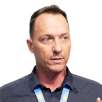



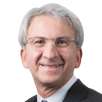
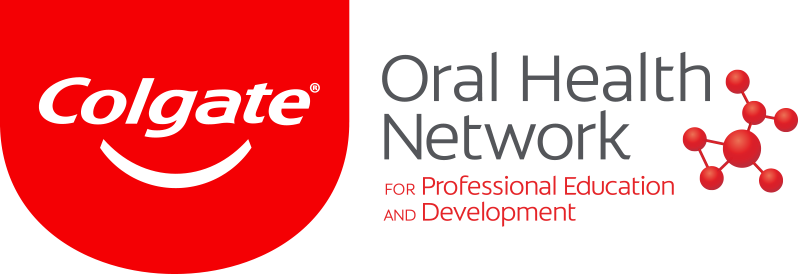
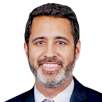
:sharpen(level=0):output(format=png)/up/dt/2023/11/Patent%E2%84%A2-Implants-_-Zircon-Medical.png)
:sharpen(level=0):output(format=png)/up/dt/2023/08/Neoss_Logo_new.png)
:sharpen(level=0):output(format=png)/up/dt/2014/02/Planmeca.png)
:sharpen(level=0):output(format=png)/up/dt/2022/10/DMP-logo-2020_end.png)
:sharpen(level=0):output(format=jpeg)/up/dt/2010/02/logo-3DISC-et-baseline-fond-blanc.jpg)
:sharpen(level=0):output(format=png)/up/dt/2014/02/MIS.png)
:sharpen(level=0):output(format=jpeg)/up/dt/2017/01/c4bae574c7308044ad1095f52e6ff1d7.jpg)

:sharpen(level=0):output(format=jpeg)/up/dt/2024/04/Shutterstock_1017664873.jpg)
:sharpen(level=0):output(format=gif)/wp-content/themes/dt/images/no-user.gif)
:sharpen(level=0):output(format=png)/up/dt/2016/10/2b1c371ae52af1eed7f5fbc9b96047e5.png)
:sharpen(level=0):output(format=jpeg)/up/dt/2017/01/200a832dd4e086f837d54ac61cfd446a.jpg)
:sharpen(level=0):output(format=jpeg)/up/dt/2018/09/bam-and-boo.jpg)
:sharpen(level=0):output(format=jpeg)/up/dt/2023/11/Unlock-the-secret-to-successful-implant-treatment.jpg)
:sharpen(level=0):output(format=jpeg)/up/dt/2023/08/Tracking-periodontal-disease-with-electronic-dental-records-may-enhance-diagnosis-and-treatment.jpg)
:sharpen(level=0):output(format=jpeg)/up/dt/2024/03/The-fight-continues-for-anaesthesia-safety-in-dentistry.jpg)
:sharpen(level=0):output(format=jpeg)/up/dt/2023/01/Small-but-powerful-Microrobots-may-enhance-endodontic-treatments.jpg)
:sharpen(level=0):output(format=jpeg)/up/dt/2018/12/Gel-fillings-may-enhance-root-canal-treatment-study-shows.jpg)
:sharpen(level=0):output(format=jpeg)/up/dt/2018/11/Silver-nanoparticle-coated-membrane-may-enhance-dental-implant-treatment.jpg)
:sharpen(level=0):output(format=png)/up/dt/2017/01/fb9463fa67d36c80fef847d0944d9250.png)


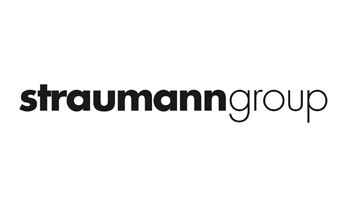

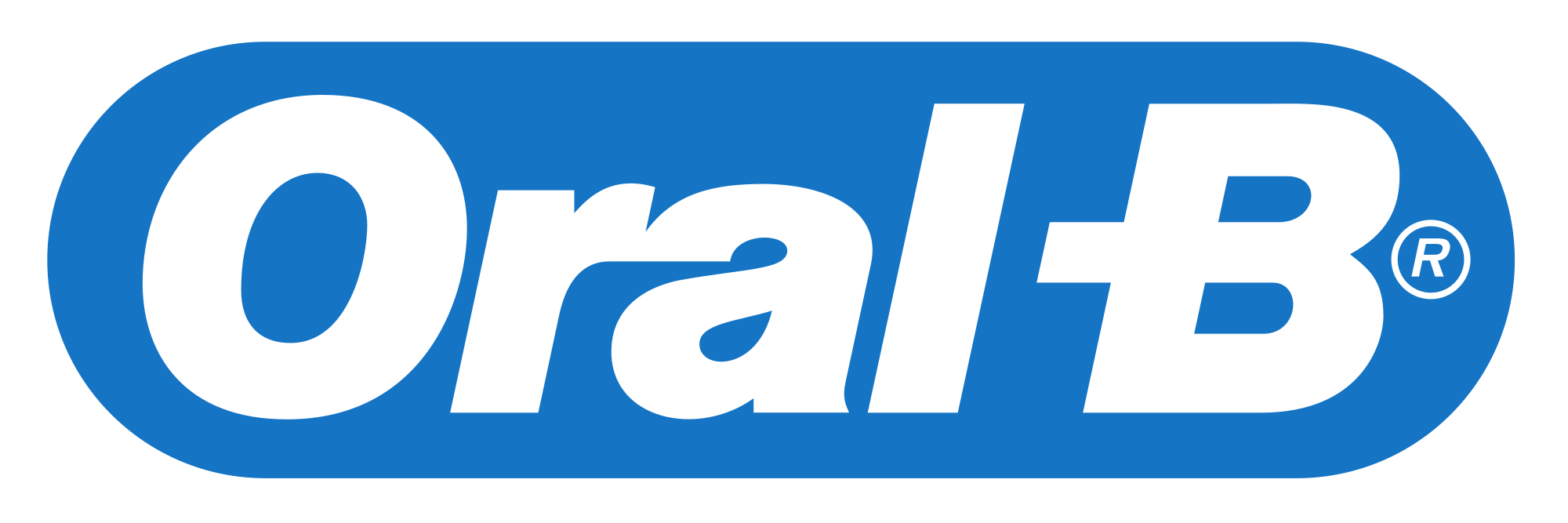

:sharpen(level=0):output(format=jpeg)/up/dt/2024/04/Shutterstock_1017664873.jpg)
:sharpen(level=0):output(format=jpeg)/up/dt/2024/04/Treating-periodontal-disease-reduces-atrial-fibrillation-recurrence.jpg)
:sharpen(level=0):output(format=jpeg)/up/dt/2024/04/3Shape-charts-sustainable-course-with-release-of-comprehensive-sustainability-report-2023.jpg)
:sharpen(level=0):output(format=jpeg)/wp-content/themes/dt/images/3dprinting-banner.jpg)
:sharpen(level=0):output(format=jpeg)/wp-content/themes/dt/images/aligners-banner.jpg)
:sharpen(level=0):output(format=jpeg)/wp-content/themes/dt/images/covid-banner.jpg)
:sharpen(level=0):output(format=jpeg)/wp-content/themes/dt/images/roots-banner-2024.jpg)
To post a reply please login or register